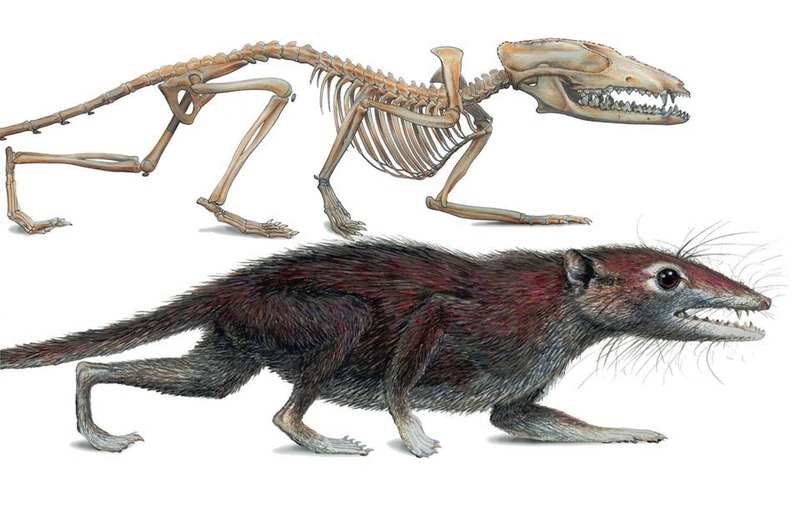
Way back in the Late Jurassic, 160 million years ago, your closest relative looked like a shrew. That's not an insult but an evolutionary truth that stems from a new fossil discovery that pushes back the earliest appearance of the peculiar group of mammals to which we, as well as many other mammal species, belong. During the heyday of the Jurassic dinosaurs, our own ancestors were just getting their start in the dark corners of the Mesozoic world.
Living mammals are split into three subgroups: the egg-laying monotremes; the pouched marsupials; and, the most diverse of all, placental mammals, which includes everything from humans to bats to whales. Each group diverged at different times, and determining when marsupials and placentals split from each other has been problematic. Fossil discoveries point to the Cretaceous, about 125 million years ago, whereas estimates made on genetic differences among living mammals suggest that the split happened even earlier.
Now the discovery of a partial skeleton of a small, shrewlike mammal, described online today in Nature, pushes back the date of the divergence by 30 million years, to 160 million years ago. Found in the famous fossil beds of Liaoning, China, the newly discovered little mammal has been named Juramaia sinensis, or "Jurassic mother from China."
Juramaia belonged to a group of mammals called eutherians, the lineage that includes placental mammals and their archaic forebears. As the earliest eutherian known to date, the creature represents what some of our own precursors were like during the Jurassic. Weighing only about 15 grams, this tiny mammal probably chowed down on insects, and the preserved part of the skeleton, from the tip of the snout to about midway down its back, indicates that it was probably a skilled climber that scrambled through the trees after invertebrate snacks.
What characterizes this animal as a eutherian, and not another kind of archaic mammal, are the number of molars and premolars in its jaws, the arrangement of cusps on its teeth, and minute characteristics of its arms and wrists, says lead author Zhe-Xi Luo of the Carnegie Museum of Natural History in Pittsburgh, Pennsylvania. Together, these traits indicate that the forerunners of marsupial mammals - called metatherians - and placental mammals diverged even earlier still and have been separated by over 160 million years of evolutionary change. "This puts down a new evolutionary milestone for the origin of placental mammals, which are important because they make up more than 90% of all of the living mammals," Luo says.
Paleontologist John Hunter of Ohio State University, Newark, agrees that Juramaia adds resolution to the emergence of our eutherian forebears. "At 160 million years old," he explains, "Juramaia is now the oldest known eutherian, preceding the previous record-holder, Eomaia, by about 35 million years." Hunter points out that Juramaia possesses a well-developed arrangement of teeth called an "echelon shear" that confirms it as an early eutherian. Discovery of this mammal may also help paleontologists looking for the earliest marsupials and their ancestors. "Direct evidence for the presence of eutherians 160 million years ago," Hunter says, "indirectly provides evidence metatherians must have been in existence at the same time even though we do not yet have their fossils."



Reader Comments
to our Newsletter